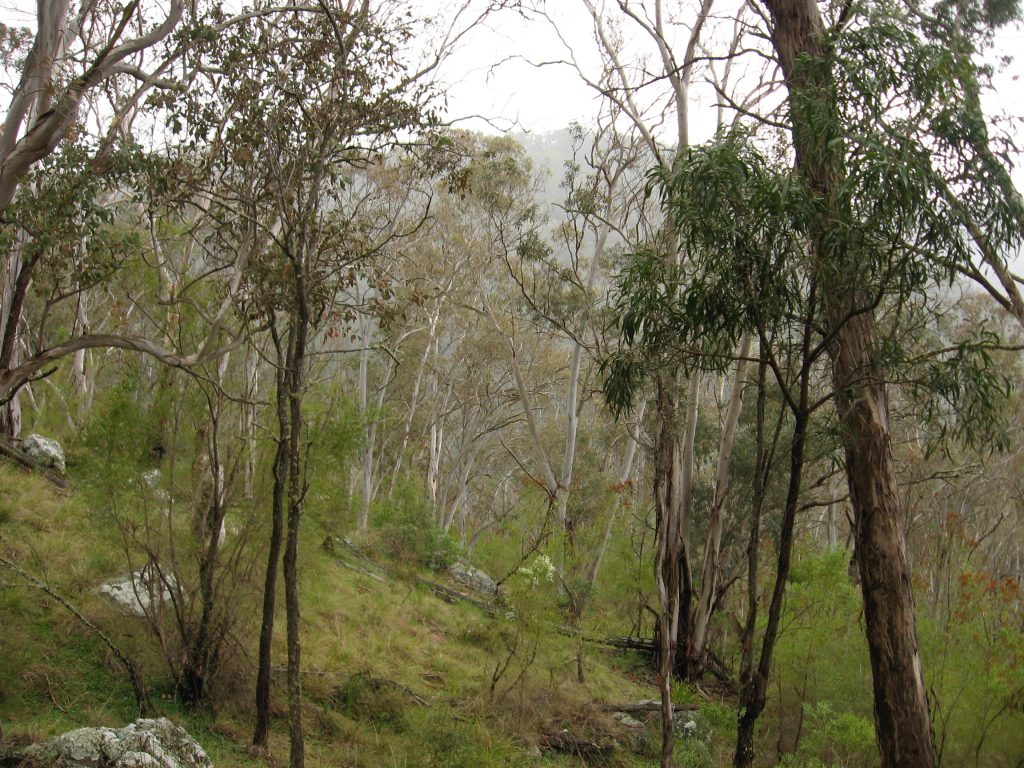On the balcony or down in the trees?

Everyone is familiar with the saying “I can’t see the woods for the trees!” What do we do, though, when this happens at work? Conventional advice suggests that we should take a step back, perhaps by “getting up on the balcony”. In this article I want to explore a somewhat counter-intuitive idea – getting down among the trees.
Losing the wood for the trees
We are increasingly understanding that complexity and emergence are impossible to grasp in any of the usual logical-rational senses. There is also a growing recognition that we need to make greater use of other forms of knowing. Most of the difficulties we face at work are still developing when we become aware of them. In a sense we need to respond to them “before the fact”. Certainly we need to respond before there is much likelihood of grasping a discernible logical-rational whole, no matter how much perspective we are able to give ourselves.
Some of the inspiration for this post has emerged from thinking about one of the mind traps proposed by Jennifer Garvey Berger in her most recent book, Unlocking Leadership Mindtraps. One risk for leaders she suggests, is being trapped by simple stories. In particular, leaders can be misled by those that lead us to think in terms of simple, linear chains of cause and effect. That, of course, is not the way complexity works.
Implicit Intricacy
Recently I’ve been finding it useful to think about situations of all kinds not so much in terms of complexity, but in terms of a poetic/metaphoric notion from the work of Eugene Gendlin. He suggests that the world as we encounter is characterised by “implicit intricacy“. I think he was trying to say that no matter how we represent or describe things in order to deal with them, there will always be more. There will always be additional layers and nuances. Our language and our capacity to say what’s going on is necessarily constrained. Central to Gendlin’s work was to developing his idea of the “felt sense”, the capacity through which people are able to notice and ultimately articulate concerns that they do not yet have words or theories for.
Responsiveness
Nonetheless, every situation or dilemma we face calls on us to respond. Inevitably there is an ongoing need for “dialogical”, experimental or improvisational engagement and responsiveness to circumstances that are still emerging.
Viewed in this way, one moment on the balcony seems a risky basis on which to take action. But, if getting up on the balcony seems risky, what else could we do?
Getting down among the trees – a starting point.
It seems to me we would need a method that doesn’t assume that what is being explored is pre-determined and already out there to be discovered. It would be one that recognises that whatever is happening is still in the processes of developing. It would also take into account the recognition that inquiring into this situation will be part of the situation’s ongoing development.
The method would be open-ended. It wouldn’t seek to fit fragments of information or observations into pre-existing categories. It would bring the taken-for-granted into view. Most importantly it would stay open to the discovery of new possibilities for as long as possible.
Try as much of the following exercise as works for you – it’s easier if you have someone else to help you and even better if you do it with other people who are involved in the situation BUT it can take a bit of practice.
- Think about a developing situation you are in right now.
- Using a small PostIt Note pad write down all the events you remember happening since you became aware of the situation.
- Notice what kind of language you use in formulating your description of the events.
- Organise the notes in chronological order as best you can remember.
- Using a different colour notes, add any the responses you can remember having as the situation developed.
- Notice what kind of language you use in formulating your description of the responses.
- Finally, simply ask yourself questions like: What is my sense of where this is headed? What do I anticipate will happen next? What do I feel the situation is calling for me to do?
Don’t seek definitive answers or certainty. Pay really close attention to vague feelings and any sense of discomfort or disquiet.

For the moment I’ll leave you with a quote from John Shotter..
This process, then, of resolving on a line of action, is not at all like carrying out a calculation, or of making a decision or choice among a set of already clear alternatives. It is quite different. It involves moving around within a landscape of possibilities, and in so doing, being spontaneously responsive to the consequences of each move, and judging which one (or combination of moves) seems best in resolving the initial tension aroused in one’s initial confusion – judgment is involved because, … we are operating here only in the realm of possibilities, not that of actualities that can be named and formalized.
Shotter, J (2012) Knowledge in Transition. Management Learning 43: 3 pp. 245-260
Stay Tuned
Next week I’ll say more about practices that might be helpful in getting down among the trees. In the meantime please join the conversation via the comments section or contact me for a conversation. I would be delighted to hear from you.